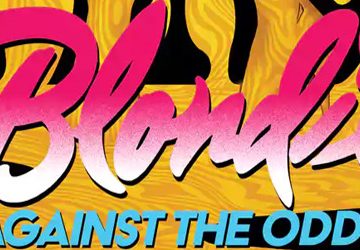When putting New Wave and Norway on the same map of sonic consciousness, many music lovers are surely quick to cite a-ha as the prime answer to the equation. That is understandable; after all, there are really only a handful of Norwegian bands that were able to break through in the international scene. Besides, the music of the trio was what put their beloved country on the global map—be it of the genre Pop or Rock, or New Wave for that matter—with a string of hit singles that included the classics “Take on Me,” “Sun Always Shines on T.V.,” and “Love Is Reason” and recent ones such as “Foot of the Mountain,” “Butterfly, Butterfly (The Last Hurrah),” and “Cast in Steel.”
However, with due respect to the beloved band and in fairness to Norwegian New Wave music, a-ha is not the only one who waved the red, blue, and white flag. Definitely a strong contender, or make it a great ally, was Fra Lippo Lippi, which actually predated a-ha in terms of formation.
Formed in 1978, in Nesodden, Norway, Fra Lippo Lippi was initially the trio of Rune Kristoffersen (bass), Morten Sjøberg (drums), and Bjørn Sorknes (keyboards), until becoming the duo of Kristoffersen and Per Øystein Sørensen (lead vocals) and eventually gaining relative success in the mid-’80s, especially in the Philippines and a few more Asian countries, where a demand and penchant for melodic and melancholic music (prime characteristics of New Wave) seemed very high and prevalent.
Fra Lippo Lippi had seven studio albums under its name, from the cold, dark, Post-Punk Gothic inclination of the debut, 1981’s In Silence; the notably transitional phase, 1983’s Small Mercies; the quadrumvirate of New Wave Pop glory—1985’s breakthrough Songs, 1987’s Light and Shade, 1989’s The Colour Album, and 1992’s Dreams; to the Sophistipop/Blue-eyed Soul ebullience of the last swan, 2002’s In Brilliant White. Among these, Light and Shade remains the most lyrically introspective and musically sophisticated, and it just turned thirty!
So, take out your musical map and journey through Fra Lippo Lippi’s thirty years of lights and shades.
Released in the USA back in 1987 through Virgin Records, Light and Shade, Fra Lippo Lippi’s fourth album, found Kristoffersen and Sørensen in their most balanced musical predisposition—fragile and reflective but also upbeat and hopeful, wistful and indifferent yet warm and caring in some corners, and all of these expressed in both the musicality and the lyricism of the songs that comprised it.
Light and Shade opened with the mild, meditative tempo of “Angel,” whose soaring melodies, silky vocals, and slightly jazzy guitar flourishes (courtesy of Steely Dan’s Walter Becker, who was also the album’s producer) swiftly but smoothly took the listener to the silver-lined skies. The brighter “Freedom” followed in the same beat but whose cascading piano and climbing trumpet carried the listener to an even higher plane of optimism. A sudden but soft dive into Light Jazz ensued in the form of the classy allure of “Don’t You Take Away That Light.”
Now, this was the shade that the album was most likely referring to—the heartrending, beautiful, piano-oriented ballad “Beauty and Madness,” which had surely caught a million lovers stuck in their saddest moments while listening to this very song.
Another Becker effect came next in the form of the slightly syncopated “Home,” which stood out with its contrapuntal bass pulses and angular piano rhythm yet still maintaining the overall Pop sensibilities of the album. The title track may be regarded as the sequel of “Beauty and Madness,” in title, sentiment, lyrics, and sonic characteristics; it remains befitting a playlist that includes similarly styled Sophistipop ballads such as “Graceland” by The Bible, “Hands to Heaven” by Breathe, “You Did Cut Me” by China Crisis, “I’ll Be There” by The Escape Club, and “Piece of Paradise” by PM.
The sunny, lyrically sarcastic “Some People” started aptly with a subtly scathing guitar ad-lib and transitioned smoothly into a piano-led and organ-drenched ornamentation, backed up by the bass and drum’s steady rhythm. Kristofferson and Sørensen turned pensive and sentimental again with the bittersweet, and almost desperate call of “Crazy Wisdom,” whose pride and grace emanated from the sexy saxophone interlude; after a dose of which the listener would most likely crave for the likes of Spandau Ballet’s “True,” Al Corley’s “Over Me,” Thompson Twins’ “Hold Me Now,” and Tears for Fears’ “Woman in Chains.”
The loungy and bluesy midtempo “Stardust Motel” was a different kind of beast, a further display of Fra Lippo Lippi’s openness to explore the sophisticated side of Pop music—that which delved heavily on jazzy guitars, keys, and horns. Finally, the Norwegian duo finished off Light and Shade with another paradox of a song—the sonically bright, celebratory, and hopeful “Indifference,” but whose lyrical sentiments were cynical and uncertain.
Yes, the New Wave sun might have not shone brightly even in the longest days of Norway during the flamboyant ’80s, but Fra Lippo Lippi was certainly in the thick of it and was more than happy to be regarded as a significant part of its rays…in light and shade, in beauty and madness, no matter the distance in between, in stitches and burns, in brilliant white or in silence, lost and quiet, now and forever…Fra Lippo Lippi.






No comment